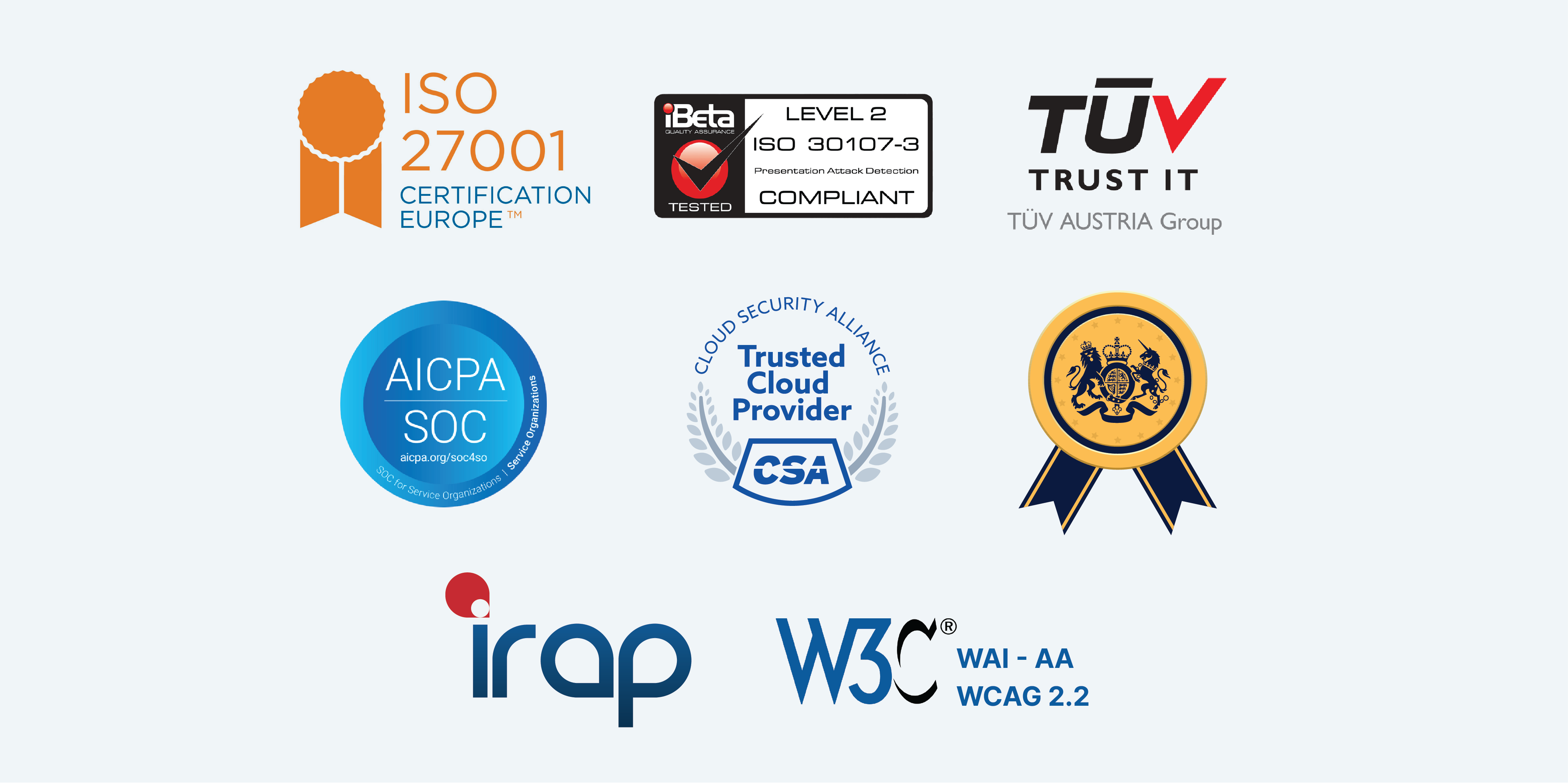Why iProov?
Science-based biometric solutions drive the highest levels of identity assurance with the best user experience. Powered by liveness and active threat management, iProov assures an individual is the right person, a real person, authenticating right now.
What Makes iProov Unique?

 Right Person.
Right Person.  Real Person.
Real Person.  Right Now.
Right Now.
iProov Biometric Solution Suite
What problem do you want to solve?
Each solution can be deployed with varying levels of identity assurance to meet your risk appetite.
CERTIFICATIONS MATTER.
- eIDAS Level of Assurance High
- ISO/IEC 30107-3
- SOC 2 Type II
- UK Government Digital Identity and Attributes Trust Framework Certification
- Certified G-Cloud Supplier
- Federal Reserve SIF Mitigation Provider
- iBeta
- iRAP
- UK National Physical Laboratory (NPL)
What’s New at iProov?

What You Need to Know About Biometric Conformance And Testing

How Deepfakes Threaten Remote Identity Verification Systems

FIDO Reveals New Authentication Statistics | The Era of Biometric Face Verification